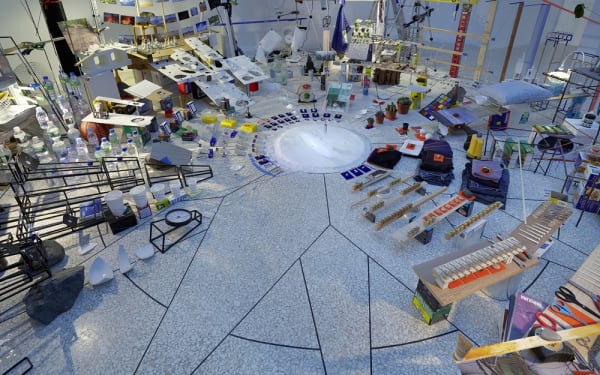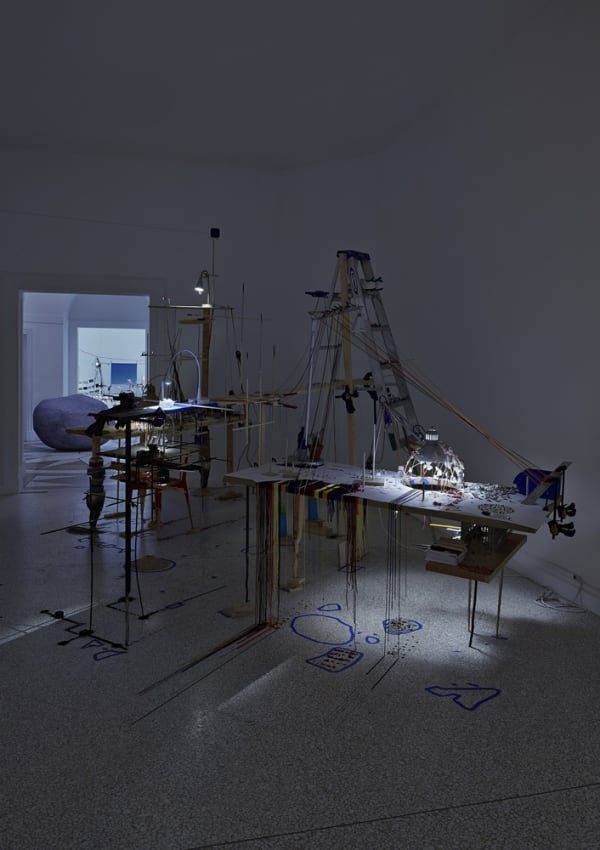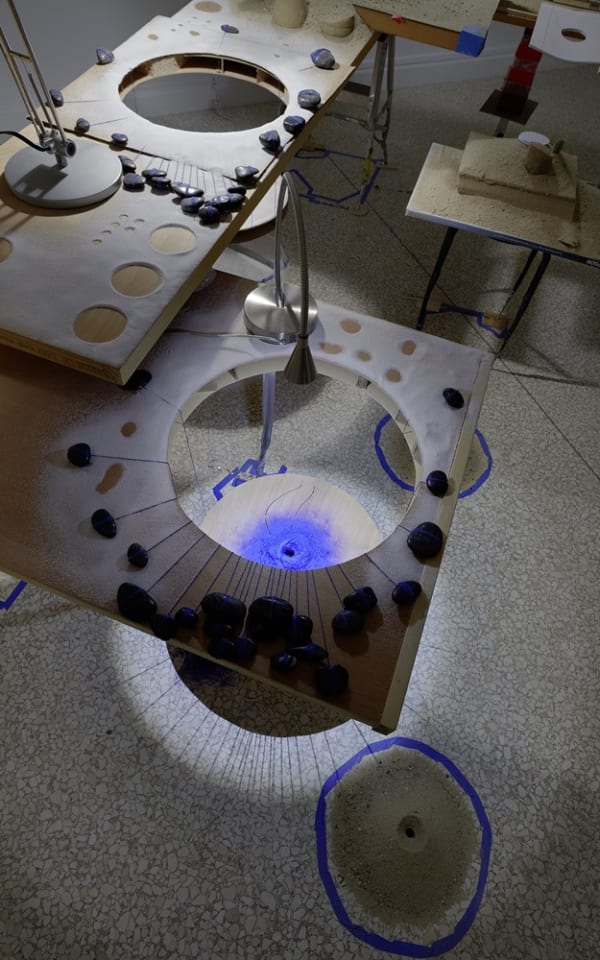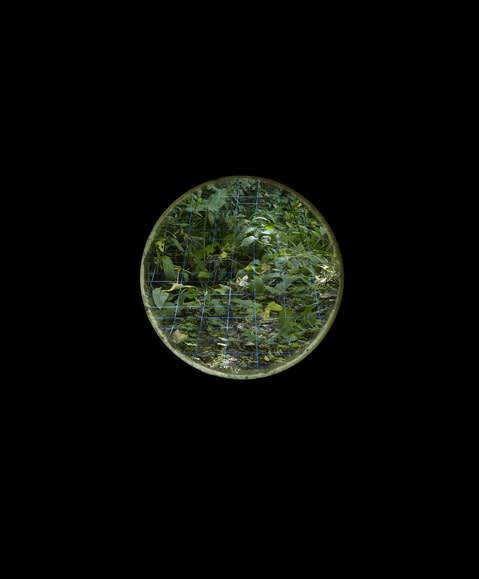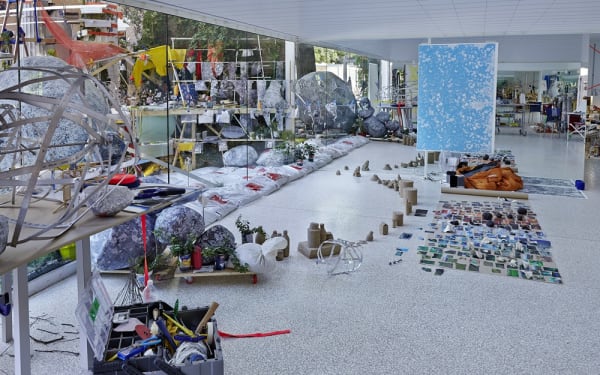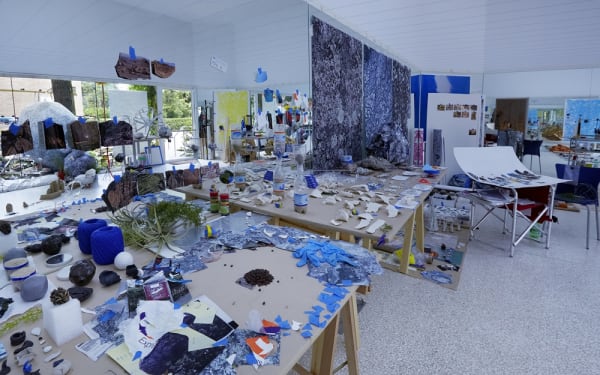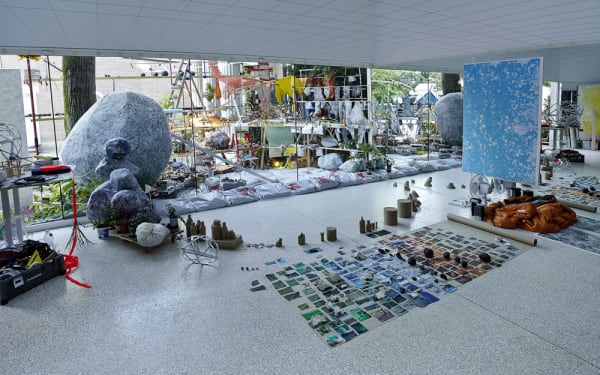Sarah Sze: Triple Point: US PAVILION, 55TH VENICE BIENNALE
Since the 1990s, Sarah Sze has developed a sculptural aesthetic that transforms space through radical shifts in scale, colonizing peripheral spaces, engaging with the history of a building, and altering the viewer’s perception and experience of architecture through large scale, site-specific interventions.
Triple Point brings together many of the ideas that Sze has developed during her practice. Central to the exhibition is the notion of the “compass” and the desire to locate ourselves in a disorienting world. Each of the rooms of the United States Pavilion functions as an experimental site, in which objects attempt to become instruments or assemblages that seek to measure or model the universe. The aspiration to model complexity—and the impossibility of that undertaking—is a key theme in Triple Point.
In thermodynamics, “triple point” designates a singular combination of temperature and pressure at which all three phases of a substance (gas, liquid, and solid) can exist in perfect equilibrium. Triangulation—the measurement of distance from three ordinal points—is also used to specify a unique position in space. Sze’s work references both these ideas—the fragility of equilibrium and the constant ambition to create stability and location.
Sze approached the Pavilion as a site of live observation and experimentation; much of the exhibition evolved on-site over a three-month installation period. Elements from the urban landscape of Venice—photographs of stone, leaves from the Giardini, tickets from the vaporetto—were collected to serve the growth of these installations. Small fragments of the sculptures were dispersed throughout shops and roofs around via Garibaldi, to be discovered by chance within the fabric of daily life. The exhibition inhabits the building and city, navigating its rooms, coalescing into systems, and ultimately degenerating into remnants—in an effort to inscribe a very fragile personal order upon a disordered universe.




